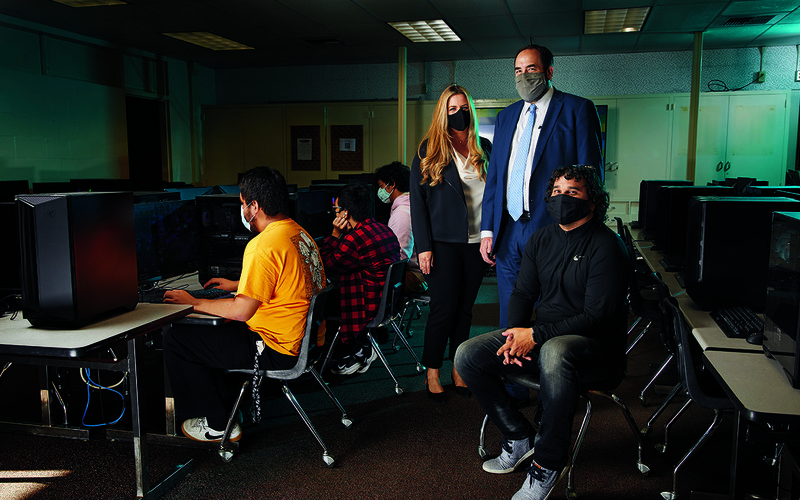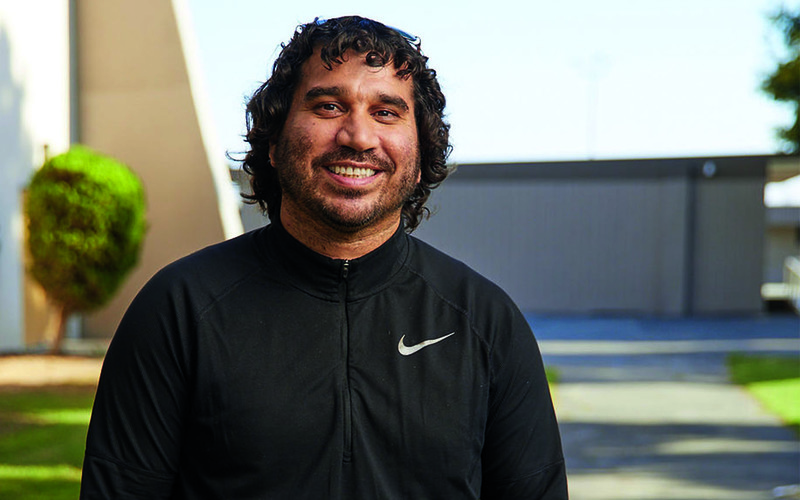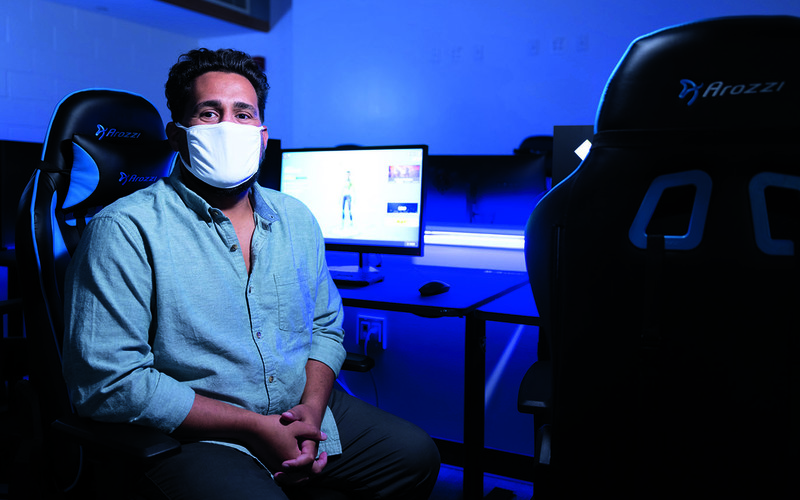Soon, AUHSD assembled an esports program committee and, in 2019, launched its first esports championship series. By the following year, the California Interscholastic Federation, the state’s governing body for high school sports, launched its own esports initiative.
“Their endorsement helped legitimize what we were trying to do,” says Adrian Olmedo, teacher, technology specialist and esports coordinator at AUHSD’s Western High School. Olmedo teaches media arts and career technical education (CTE) and knows firsthand that scholastic esports is about much more than gaming.
“A lot of kids come in thinking they want to be a Twitch streamer. It’s what gets them into the esports program,” he says. “But it’s our job as educators to show them what other skills they can develop.”
Academically, various groups harness students’ interest in esports, engage them in extracurricular pursuits, and channel their energy into STEM fields, media and other career paths or postsecondary education opportunities.
WATCH NOW: Create a successful and inclusive esports program for K–12 students.
“Schools are trying to get more students involved in extracurricular activities because it leads to a giant leap in academic achievement,” explains Joe McAllister, formerly CDW•G’s education esports expert. “In K–12, esports programs are built around soft-skill development such as teamwork, communication skills, leadership, dependability as well as CTE pathways. So even if the esports industry slowed tomorrow, it would continue to thrive in K–12 education because of all the benefits for kids.”
A Global Phenomenon Impacting K–12 Schools
Esports has exploded from highly competitive professional teams to nearly 200 varsity esports programs at colleges and universities in the United States. According to Newzoo’s 2021 Global Esports and Live Streaming Market Report, esports will rake in more than $1 billion this year alone.
Within the past few years, esports programs have also sprung up in K–12 schools around the country as educators see them as opportunities to engage students in their future. The North America Scholastic Esports Federation supports nearly 2,000 high school clubs across the U.S., Canada and Mexico. PlayVS, a commercial esports platform, hosts state and regional high school leagues in 23 states and provinces.
In 2018, the Connected Learning Lab at the University of California, Irvine published “Understanding Esports as a STEM Career-Ready Curriculum in the Wild.” According to the study, “while teams of competing players reside at the center of activity, it is the surrounding community roles, practices and products that serve as the generative engine.”

















